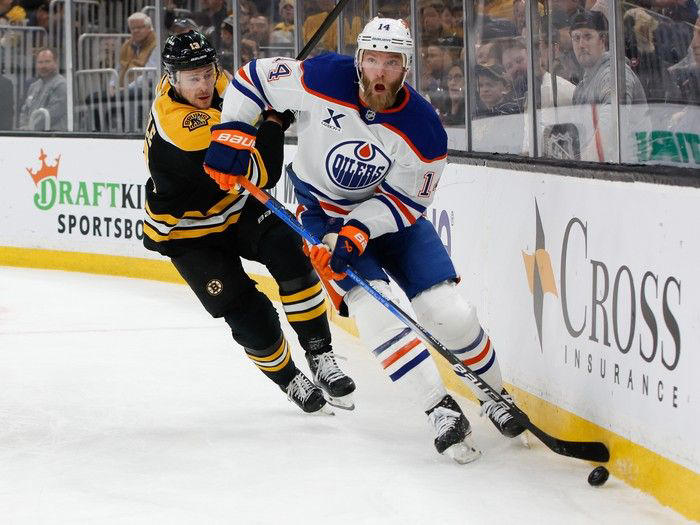Last Barrel in the Well: Are the Edmonton Oilers Making One Final Push Before the West Overtakes Their Fading Power?
There’s a sound that echoes through Rogers Place in spring—half roar, half plea—that captures the tension of an era on the edge. It’s the sound of a hockey city that has watched the greatest player of his generation do things that scramble defensive geometry and still leave seasons unfinished, the sound of a franchise that has carried the weight of promise so long that hope now drips with urgency. Call it what you want: fatigue, impatience, obsession. In the West, where contenders cycle like boomtown fortunes, the Edmonton Oilers find themselves framed in a narrative that no proud club ever wants to wear: the last stand of a declining power. Maybe that label is harsh; maybe it’s premature. But labels don’t wait for permission in markets where superstars skate and banners haven’t risen. They arrive the moment a window blinks. The question in front of Edmonton isn’t whether Connor McDavid and Leon Draisaitl are still otherworldly—they are. It’s whether the infrastructure beneath them can hold as the conference hardens, depth leaks, goals walk out the door, and cap math squeezes ambition into calculated gambles. Last stands aren’t always desperate; sometimes they’re decisive. This season will decide which one the Oilers are staging.
No decline begins with collapse. It starts with hairline fractures: a middle‑six winger priced out and replaced by hope, a trusted veteran whose recovery drags, a special‑teams edge dulled by personnel churn, a goaltending tandem that can’t hide a Tuesday night sag in February that becomes the difference between home ice and a plane ticket into altitude. Edmonton’s ledger of fractures has grown more crowded. Sixty‑plus goals exited in offseason attrition. Contract clocks tick louder on key pieces. The Western arms race refuses mercy—Dallas layers youth on structure, Colorado retools on the fly, Vegas reloads in secret, Vancouver stirs, and lurking wild cards build goaltending fortresses hoping to steal coin‑flip series. Against that landscape, even excellence at the top can be swallowed if middle weight slips. Edmonton has lived this math. Too many elimination tapes show the same anatomy: McDavid and Draisaitl dragging gravity across 200 feet while opposing depth throws body blows shift after shift until something fractures. That’s how windows narrow—not because stars dim, but because the scaffolding rusts.
Yet calling the Oilers “declining” risks missing the volatility that defines the McDavid era. Every time the national discourse edges toward pessimism, Edmonton catches fire: a win streak out of nowhere, a special‑teams binge, a deadline pickup whose chemistry turns lines molten. The club has reinvented itself in‑season often enough that any obituary risks immediate obsolescence. Still, the ecosystems sustaining those resurrections grow more fragile as cap space thins and prospect pipelines are asked to produce role players on demand. Reclamation projects have powered recent surges; you can build a year on them, but rarely an era. To stay a power, Edmonton must convert volatility into stability—banking depth scoring that survives cold streaks, insulating goaltending so panic doesn’t spread when one soft goal sneaks in, integrating youth without bleeding points during the curve. Last stands are lost in the margins, not the headlines.
What makes this moment feel pivotal is the philosophical fork beneath the roster sheet. Do the Oilers lean harder into their identity—speed, controlled entries, weaponized power play, high‑event shot trade that dares opponents to skate above their metabolic ceiling? Or do they attempt another layer of structural discipline—more layered neutral‑zone traps, heavier dump‑and‑retrieve sequences that bleed clock, slower risk tolerance in the middle of periods? Each choice carries cost. Play to your stars and you maximize ceiling but expose your floor when supporting cast finish evaporates. Rein yourself in and you may save gas for Round 3 but risk blunting the superpower that makes you Edmonton in the first place. Declining powers often fall not because they choose wrong but because they try to choose both—splitting identity until nothing feels lethal. The Oilers must resist that split. Their last stand must be unmistakably theirs.
Cap pressure forces courage or caution, sometimes in the same week. Edmonton’s front office has danced on that wire long enough to know every pushed chip reduces future insulation. Moves now are no longer about “can this help us?” but “can this help us enough to justify the exit cost two summers from now?” When you operate under that constraint, you need elite forecasting: Who ages well next to McDavid’s pace? Which undervalued shooter’s expected-goals profile will bloom with Draisaitl feeds? Which bottom‑six grinder drives retrievals that feed Edmonton’s east‑west attack? Miss twice and you burn oxygen; hit once and you extend the window a season. Contending in the cap era is a series of coin flips weighted by analytics, scouting intuition, and locker‑room chemistry. Edmonton has already spent some of its best coins. The purse is lighter.
There is, however, a cultural defiance pulsing in this room that analytics can’t cost out. Teammates talk about accountability born of embarrassment—those early wasted prime seasons, the defensive breakdown tapes that lived on the video wall longer than anyone wanted, the sense that you don’t get to ride shotgun with generational talent and mail in B‑level compete. That edge hardened these Oilers. You see it in backchecks from stars, in board battles from skill guys who once floated, in bench body language when penalties pile up and someone snarls instead of slumping. Declining powers drift; determined ones snarl. Edmonton hasn’t drifted. It’s been out‑lasted, out‑layered, or out‑goaltended—but rarely out‑cared. That matters in last stands because emotion buys recovery speed between games, and playoff series swing not just on talent but on which room answers adversity with friction instead of fracture.
Goaltending remains the card no narrative controls. When the crease holds, Edmonton’s structure looks sharper, its risk tolerance sane, its breakout decisions calmer. When it wobbles, score effects explode and the Oilers chase. A declining power cannot afford chase; it hemorrhages poise and exposes gap control that becomes social media chew toy. Whoever claims the net must do more than post league‑average save percentages; he must give the bench room to breathe. Cup runs die when players start cheating offense because they don’t trust the last line. Trust is fragile; last stands are built on it.
Fans feel all of this in their bones. They’ve lived the dynastic 1980s echoes long enough; the shadow of banners has lengthened into pressure. Edmonton is both haunted and inspired by its past—too decorated to hide, too long removed to be satisfied by deep runs alone. That psychic mix makes the city volatile: every slump triggers trade machine fever, every win streak resurrects parade routes. Players learn to surf it or drown. The current core surfs better than any since the dynasty, but surfing fatigue is real. Last stands often crystallize when a market collectively says enough—win now, not later. That voice grows louder each spring.
If this is the last stand of a power slipping toward middle‑weight status, it won’t be for lack of supernova talent. It will be because the supporting cast couldn’t replenish fast enough, because the margins of health and cap broke wrong, because the West’s rising tide finally swamped even McDavid’s current. But decline is not destiny; it’s a fork. Edmonton can seize this season as reclamation—double down on what makes it terrifying, trust internal ascents, steal one more smart trade, and ride elite top‑end production through three brutal rounds. The Oilers don’t need to become perfect; they need to become stubbornly sufficient everywhere else so their brilliance can breathe.
Look around the conference and you see what happens when windows close—star cores splinter, retools masquerade as rebuilds, and markets reset their demands downward. Edmonton is not there yet. The Oilers still flex the league’s most unstoppable shift‑by‑shift engine in 97, still deploy one of the deadliest half‑wall finishers in 29, still run a power play that makes penalty kills pray for glass clears. A declining power doesn’t hold those cards; a pressured power does. Maybe that’s the more accurate framing: the Oilers aren’t fading so much as cornered by expectation, and cornered animals don’t go quietly.
So call this what it is: an inflection year masquerading as a last stand headline. If Edmonton shores its depth, finds answers in net, and wrings 20 more goals out of its middle six, everyone who rushed to carve tombstones will rewrite their copy by April. If not—if the 63 lost goals prove unreplaced, if cap gymnastics fail, if structural leaks reappear in the second round—the “declining power” tag will harden, and the next Oilers conversation will shift from “how do we add?” to “what must we protect?” That’s the thin edge. That’s the sound you hear in the building when spring beckons and the puck drops and a fan base that knows glory and drought holds its breath. Last stand or turning point—the Oilers will decide. The West is ready to judge.



